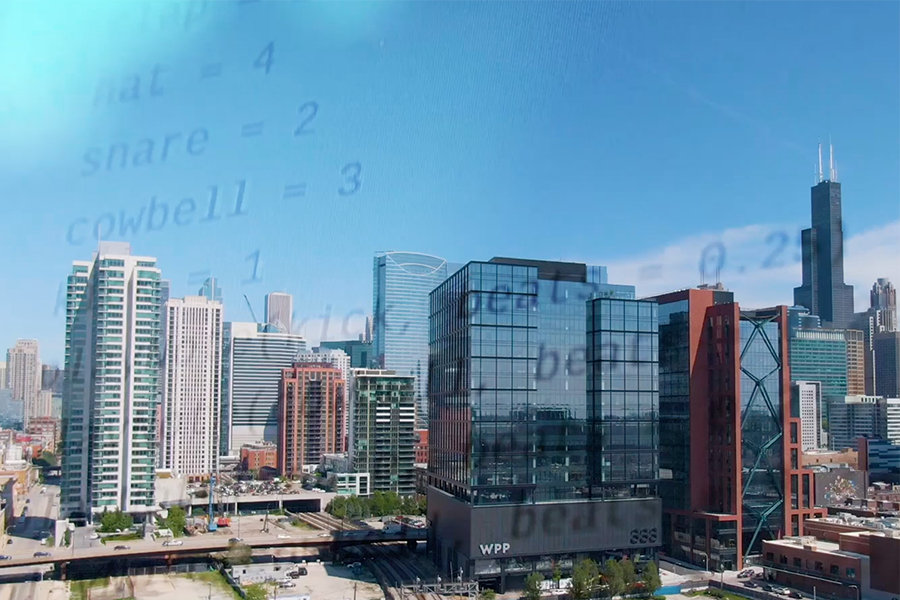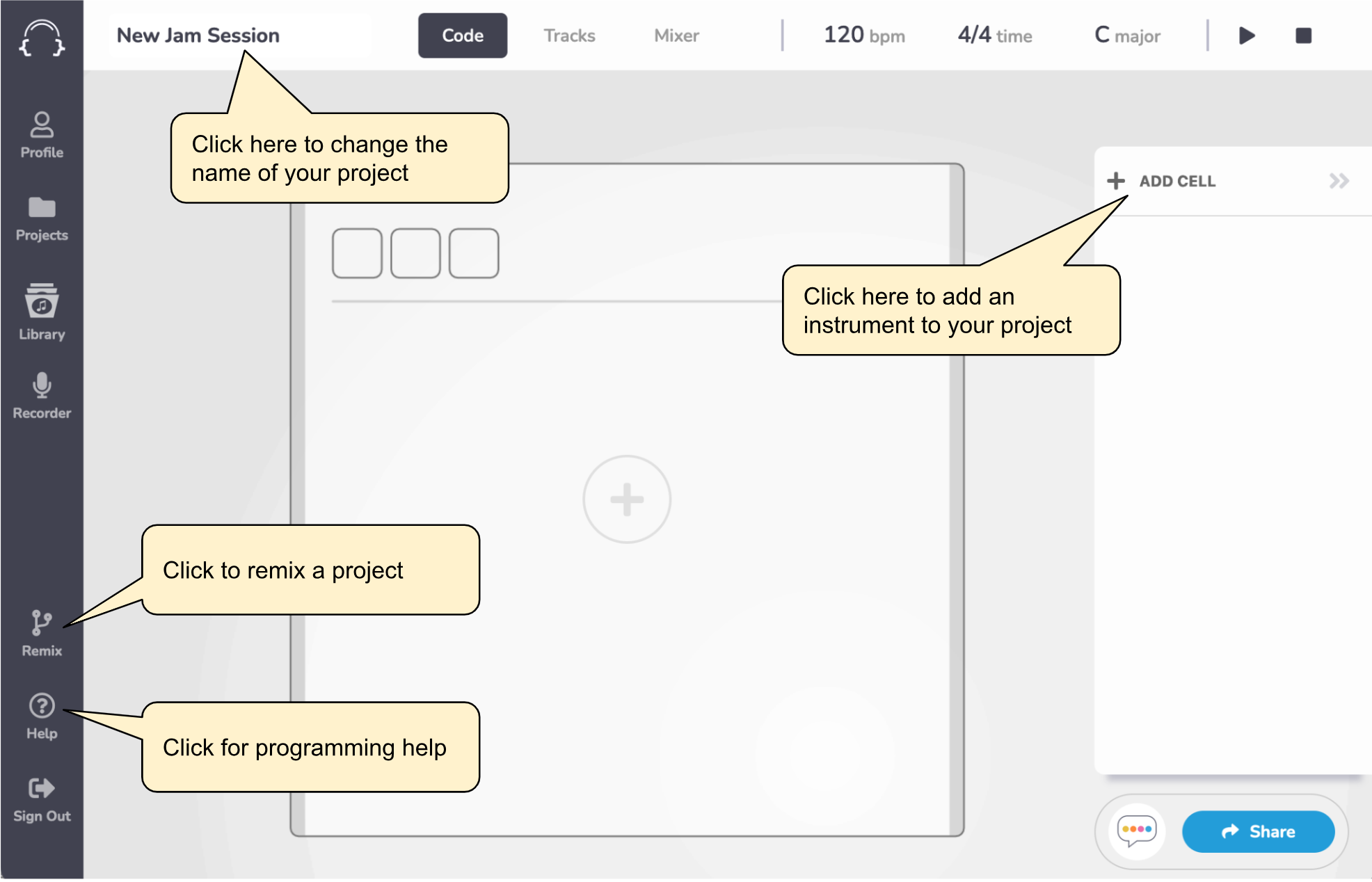
Lesson Plan
Code a Chicago House Beat
Learn how to code and customize a Chicago-style House beat.
Level
BeginnerTime
45 minutesIn this activity we're going to learn how to code a Chicago-style House beat. House music originated in Chicago's underground club culture and has since become a worldwide phenomenon. House is characterized by a thumping four-on-the-floor beat pattern and high energy tempos in the 120 to 130 beats per minute range. Take a minute to listen to this example track, and try to pick out all of the different drum sounds.
Here's what the basic House patteren looks like. Notice that there's a kick drum placed at the start of every beat (four-on-the-floor). There are also snare drums at the start of beats 2 and 4.
Now that we have an idea of what a House beat sounds like, let's code it in Python.
Step 1: Log In to TunePad
- Go to tunepad.com
- Click on Sign In
- Click on Sign in with Google
- Enter your Gmail address and password
Step 2: Create a new TunePad Project
Click on the New Project button to create an empty project. It should look like the picture below.

Step 3: Kick Drums
- Click on the Add Cell button in your new project.
- Click on the Drum button to add a new drum cell.
- Change the name of the cell to Kicks.
- Set the instrument to Drums → Headlines Drums and add this code.
- Press the Play button to hear how it sounds.
Note that the first line of code above starts with a hashtag symbol (#). In Python programming, anything that comes after a hashtag is called a comment. Comments are notes for human programmers that are ignored by Python. Line 1 is there to help remind us which lines of code play the kick drum part.
Step 4: Snare Drums
- Click on the Add Cell button again to add a second Drum cell.
- Call this cell Snares
- For the snare drum part, we want to add hits to beats 2 and 4 while skipping beats 1 and 3.
- The easiest way to do this is to use the
restfunction. - Try playing both the Kick and Snare cells together at the same time.
Step 5: Hi-Hats
- In House music, hi-hat sounds get sprinkled between the kicks and snares to add energy and originality.
- Here's a very simple pattern that you can customize.
- In the next activity we'll learn how to use loops in Python to make more interesting hi-hat patterns.
Try playing all three cells together at the same time to hear how they sound.
Step 6: Turbo Kicks
Here's a slightly more complicated version of the kick drum cell that uses a Python loop to repeat each drum sound four times in a row. It also plays a softer echo of each kick, which can add variety and energy to your beat.
Tips for Live Coding
- Practice makes perfect. Practice typing out lines of code so that you can do it fluidly, confidently, and accurately.
- Make use of Copy+Paste for repeated lines of code (you can also use a loop, which we'll show in the next beat activity).
- Write some starter code ahead of time. That way you don't have to code everything from scratch.
- Add or remove a hashtag at the beginning of lines of code to add or remove elements from live music.